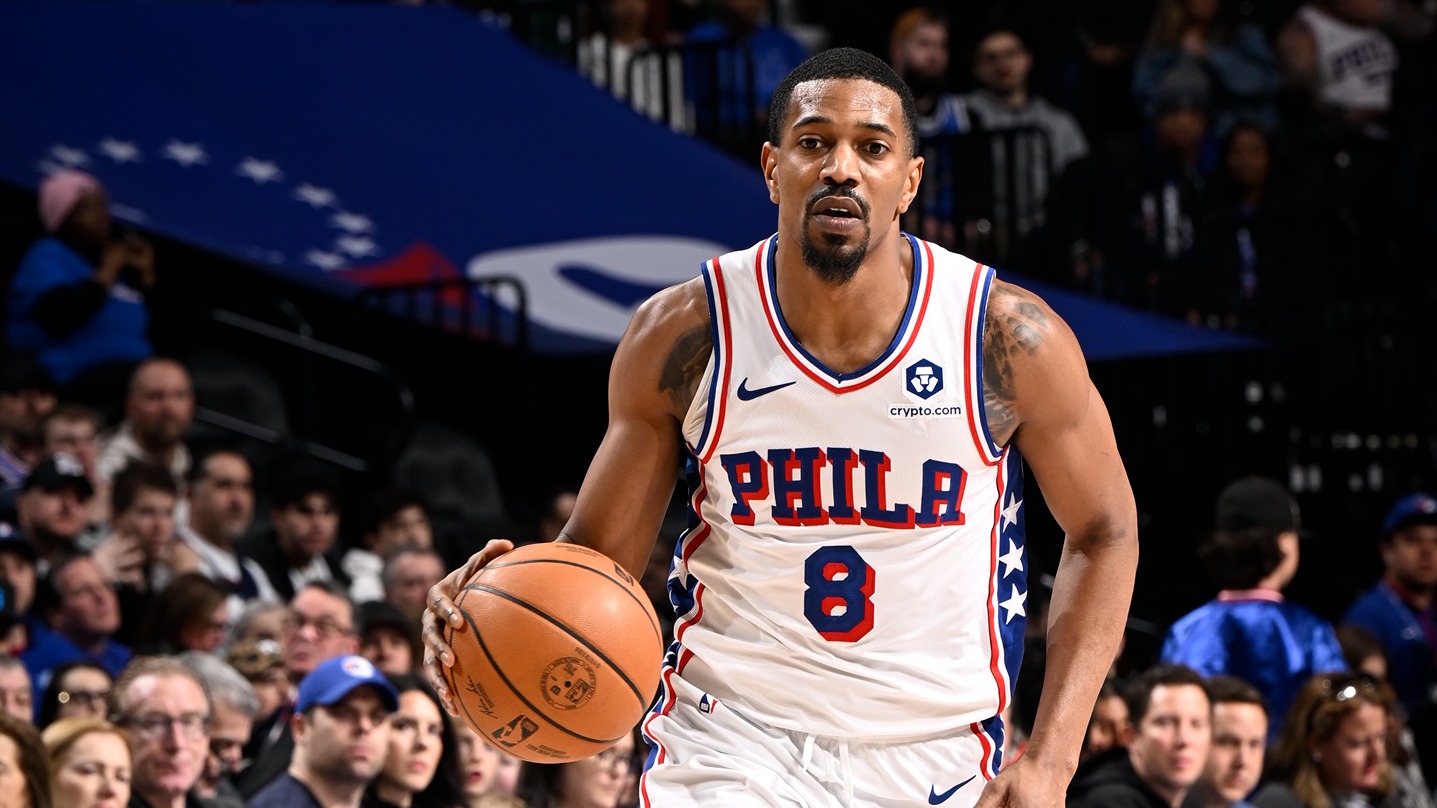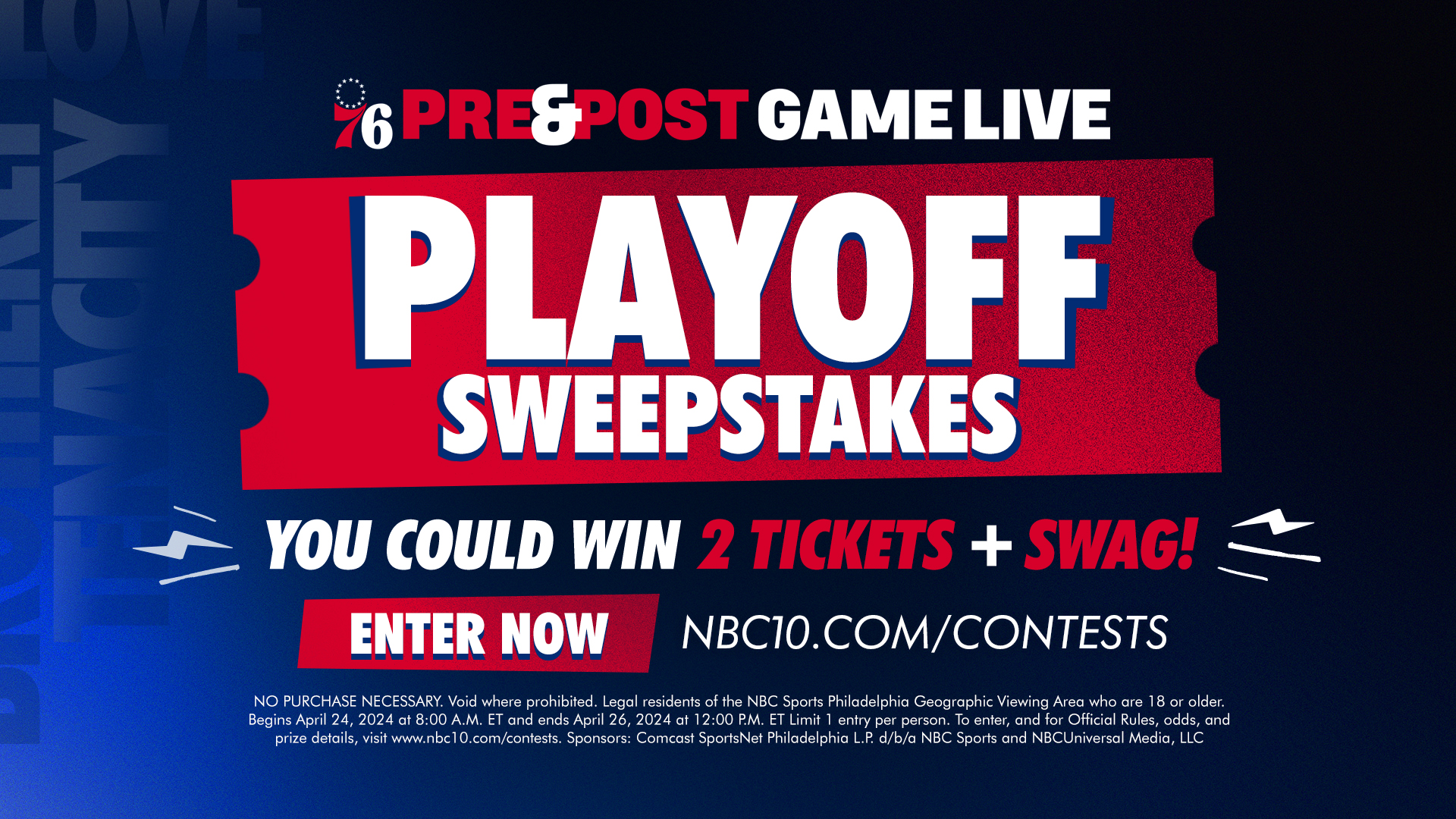When the clock strikes midnight on July 1 and the NBA's free agency period commences, there's no mystery as to who the Sixers' first two phone calls will likely be made to.
In star-hunting mode, the Sixers will pursue LeBron James and Paul George.
But the excitement of potentially adding either James or George to the existing talented young core should be tempered with the real possibilities of either superstar re-signing with their current team or heading elsewhere.
If LeBron nor P.G. signs with the Sixers, what should the outline of their plan-B look like?
Try again next summer
The Sixers have a two-year window when they can access max cap space without sacrificing core pieces. If they whiff this offseason, they should get another chance in the summer of 2019 when Klay Thompson, Kawhi Leonard, Kyrie Irving and Jimmy Butler project to be free agents. Irving, Butler and Leonard (unless he's dealt somewhere he 100 percent intends to re-sign) should test the waters, but Thompson could sign an extension this offseason.
Philadelphia 76ers
Complete coverage of the Philadelphia 76ers and their rivals in the NBA from NBC Sports Philadelphia.
If there were high-end complementary players on the market that would fit in, like Khris Middleton or Tobias Harris who coincidentally are both free agents next offseason, there would at least be an argument for pursuing those kinds of players rather than hoping Thompson or Leonard actually hit free agency and then banking on either of the four stars to actually sign in Philly. But since the drop-off after the stars is significant, there isn't much of a debate on how the Sixers should conduct their business.
Maintain future cap flexibility
The Sixers will almost certainly keep most, if not all, their powder dry for next summer when they project to have over $40 million to spend. With a 30 percent max contract slated to start at $32.4 million in 2019, they won't want to commit too much money beyond this season. So, like last offseason, they'll likely only be in the market for one-year deals.
Typically, teams have to pay a premium on one-year contracts. We saw this when the Sixers signed JJ Redick for $23 million and Amir Johnson for $11 million last summer. Since the Sixers weren't offering any long-term security they paid an above-market price for both, probably around double what their average annual salary would've been on multi-year deals. Because of this, the market for them tends to be slim and they're rare for starter-level free agents.
Although, this summer could be different and work in the Sixers' favor.
Capitalize on a small marketplace
With the league's salary cap expected to be $101 million, look at Spotrac's active salary list showing the least committed money for 2018-19 excluding cap holds for pending free agents. It's important to note that these numbers are fluid and first-rounders selected in last week's draft aren't included because they haven't signed their rookie-scale deals yet, so the Sixers really have around $26 million in space.
There are two big takeaways here. First, there won't be a ton of money out there. From the numbers above, we're talking 13 teams with at least $10 million in space. As of right now, 22 teams project to have at least $20 million in space next summer.
Secondly, there's only a handful of playoff teams besides the Sixers with significant space and one of them, the Rockets, will operate above the cap with three starters hitting free agency.
As for the non-playoff teams, the Lakers will chase stars and try again next year if they strike out. The Bulls and Hawks are rebuilding, thus more likely to use their space to take on bad salary for assets. Dallas needs a starting center. Phoenix and Orlando need starting point guards. Brooklyn will likely lay low as it finally gets its pick back. And the Kings are the Kings.
With such a depressed marketplace, some of the top secondary free agents could take inflated one-year deals, and then try again for that multi-year, eight-figure deal next offseason when there will be more money and competitive teams in the marketplace.
For free agents looking to improve their stock on an inflated one-year deal while aiming for a big payday next summer, the Sixers could be an attractive destination.
How much to spend?
The Sixers' spending limit in free agency will depend on two things: the cost of getting off Jerryd Bayless' $8.5 million expiring contract and Redick's willingness to take a discount.
If they dump Bayless, and waive Richaun Holmes' non-guaranteed deal, they would have over $36 million in space. Now, if the Sixers needed to create the necessary max cap space for a star, they wouldn't have an issue with stretching Bayless' cap hit over the next three years or trading him with an asset into another team's space. But if that's not the case, is it worth surrendering a future asset (say a lottery-protected 2019 first-rounder) to create space for one-year rentals?
That could depend on how much of a pay cut Redick is willing to take. Re-signing Redick will be a priority and while the Sixers gave him a big payday last season, he proved to be a valuable starter and may want his next salary to still reflect that. Say he gets a multi-year offer in the $24 million range from another team and won't re-sign for below $18 million, that leaves the Sixers with just $8 million in space (around the value of the non-taxpayer mid-level exception) without any corresponding moves. If they move Bayless and cut Holmes, that space goes up to $18 million.
But if Redick is willing to sign a cheaper deal, let's say $12 million, so the Sixers can add more pieces, they'd still have $14 million in space and could get up to $24 million.
Don't settle on running it back
The free agency plan B shouldn't be as simple as running it back. Whether James heads West or not, there will be a legit path to a top-two seed and the conference finals. But, as the Celtics exposed in the playoffs, that won't come without improving the roster's depth.
The Sixers shouldn't sacrifice future cap flexibility or dump Bayless for significant assets, like first-rounders beyond 2020 with the looming abolishment of the one-and-done rule, but that doesn't mean they can't strive to improve upon their other three pending three agents.
Johnson, Marco Belinelli and Ersan Ilyasova were all key pieces to the 52-win season, but the Sixers could stand to upgrade, specifically getting younger and more athletic at those positions off the bench (center, wing and stretch-four). Again, a lot of this will depend on how much space they have after re-signing Redick and whether Bayless is still on the roster, but the Sixers could have a real shot at adding one or two substantial upgrades to their bench.
Even if the Sixers don't get James and George, they could still have the ability to build a stronger team than last season's.
More on the Sixers
• What LeBron wants in pitch from Sixers
• Not a rookie? Try telling that to Ben Simmons' trophy case
• Despite Embiid's claims, he's not league's best on defense




